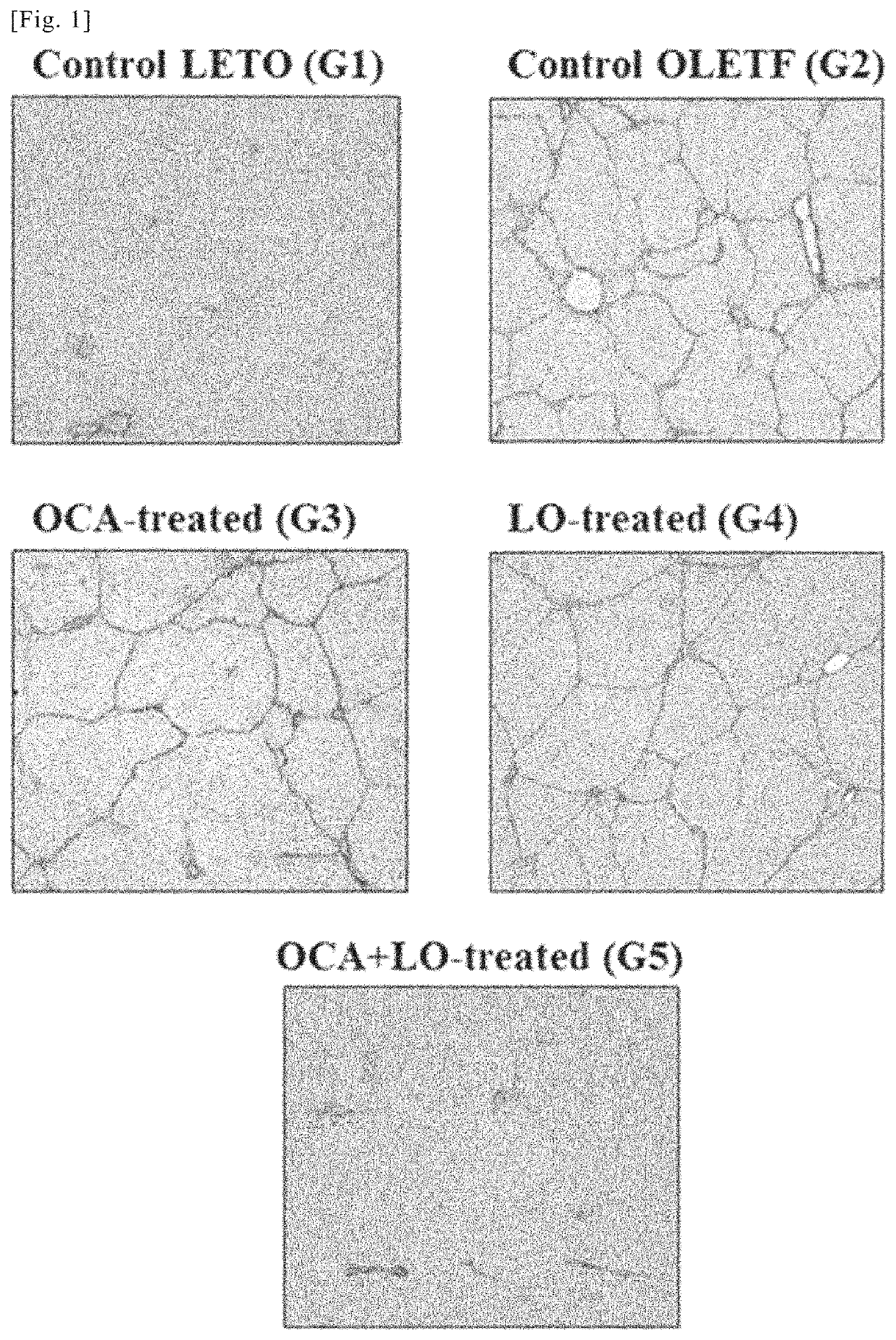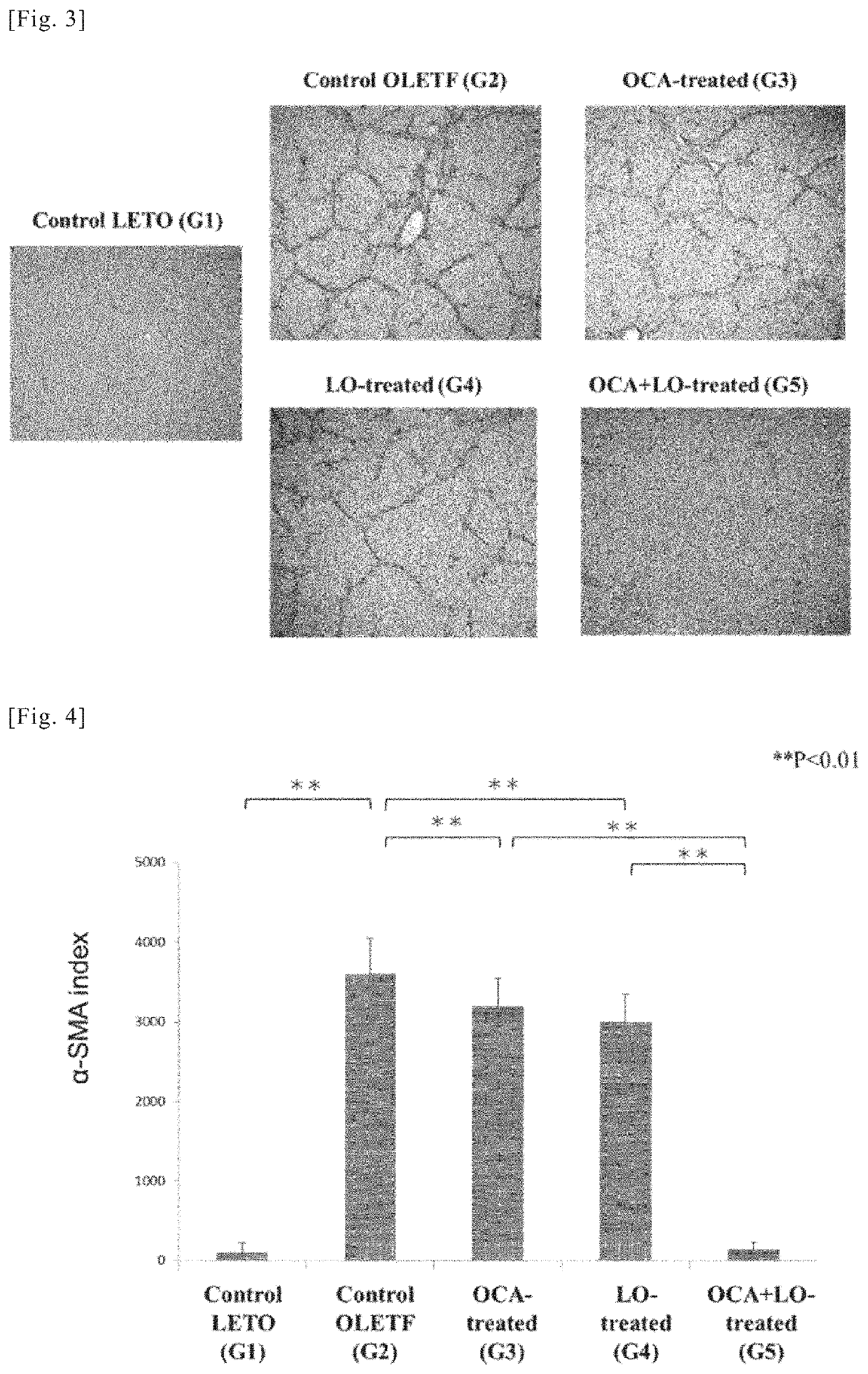Medicine obtained by combining FXR agonist and ARB
a technology of agonist and agonist, which is applied in the direction of heterocyclic compound active ingredients, drug compositions, organic active ingredients, etc., can solve the problems of liver cirrhosis or liver cell carcinoma, serious risk of progression to diseases, drug of this class has yet to be found to be effective as agents, etc., to improve the therapeutic effect, prevent, inhibit, and/or relieve nash hepatic fibrosis
- Summary
- Abstract
- Description
- Claims
- Application Information
AI Technical Summary
Benefits of technology
Problems solved by technology
Method used
Image
Examples
working examples
[0197]The following is an explanation of the present invention in further detail by means of working examples, but the scope of the invention is by no means limited by these examples.
working example 1
Method
[0198]As a rat NASH model, Otsuka Long-Evans Tokushima. Fatty (OLETF) rats, which are known as a model for naturally-occurring type II diabetes with obesity, were administered porcine serum (PS) in order to experimentally induce liver fibrosis, and the therapeutic effects of distilled water (vehicle administration group), obeticholic acid (an FXR agonist) and losartan (an ARB) (administration groups, combined administration group) were investigated according to the following method.
Animals Used
[0199]Male OLETF rats (n=40) and Long-Evans Tokushima Otsuka (LETO) rats=10; non-diabetic negative control group)
Drugs Used
[0200]Obeticholic acid (obtained from Intercept Pharmaceuticals, Inc. via Sumitomo Dainippon Pharma Co., Ltd.) was used as an FXR agonist, and commercial losartan (potassium salt of losartan; referred to in this working example simply as “losartan”) was used as an ARB.
Administered Dosage, Administration Period
[0201]Obeticholic acid (30 mg / kg / day) and / or losartan (30 ...
working example 2
[0208]Using the liver sections from the rats in the various groups obtained in working example 1, an immunohistochemical study by immunohistological staining with α-smooth muscle actin (α-SMA) antibody and a quantitative analysis of transforming growth factor-β1 TGF-β1) and collagen (α1(I) procollagen) mRNA expression were conducted. α-SMA is known to be an indicator (marker) of activation of hepatic stellate cells (HSCs) (also known as hepatic star cells). Moreover, activation of hepatic stellate cells (HSC), overproduction of TGF-β1 (a fibrosis-promoting cytokine) accompanying said activation, and overproduction of extracellular matrix components such as collagen are thought to play a central role in the mechanism of progressive hepatic fibrosis in NASH. For this reason, mRNA expression of TGF-β1 and collagen (α1(I) procollagen) can be a fibrosis indicator (marker).
(1) Immunohistochemical Study by Immunohistological Staining with α-SMA Antibody
Method
[0209]Using the same method as ...
PUM
| Property | Measurement | Unit |
|---|---|---|
| width | aaaaa | aaaaa |
| width | aaaaa | aaaaa |
| pharmaceutical composition | aaaaa | aaaaa |
Abstract
Description
Claims
Application Information
 Login to View More
Login to View More - R&D
- Intellectual Property
- Life Sciences
- Materials
- Tech Scout
- Unparalleled Data Quality
- Higher Quality Content
- 60% Fewer Hallucinations
Browse by: Latest US Patents, China's latest patents, Technical Efficacy Thesaurus, Application Domain, Technology Topic, Popular Technical Reports.
© 2025 PatSnap. All rights reserved.Legal|Privacy policy|Modern Slavery Act Transparency Statement|Sitemap|About US| Contact US: help@patsnap.com



